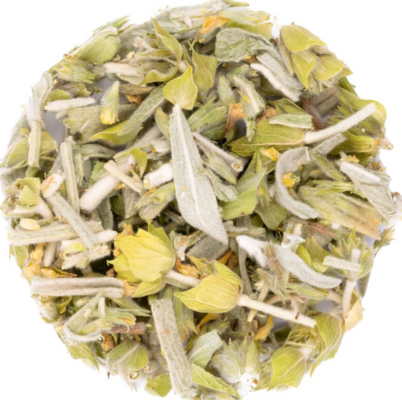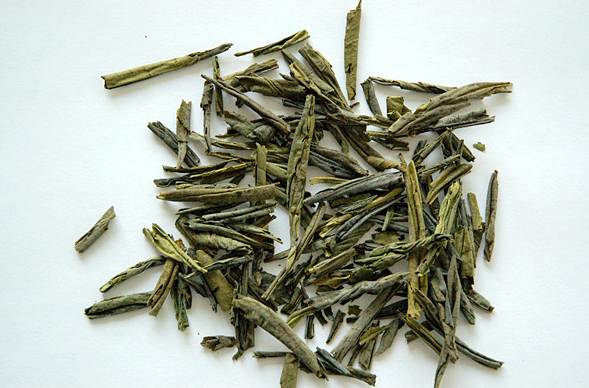Biluochun or ‘Green Snail Spring’ tea is a prestigious Chinese green tea known for its bright color, strong aroma and mellow, floral taste. It hails from the Dongting mountain region near Lake Tai, close to the city of Suzhou in the Jiangsu Province. The tea is named after the curly shape of the rolled tea leaves resembling snail shells, and for being harvested in the spring. One tea master even deemed it to be the best tea in the world in his tea encyclopedia.
As with many Chinese teas, the origins of Biluochun tea is shrouded in mystery and legend. Initially the tea was known as ‘Xia Sha Ren Xiang’ or “scary fragrance”. One story is that a nun who was traveling up the mountain picked a few tea leaves, and after brewing the tea blurted out “The fragrance is so scary” in a surprise reaction to its rich aroma. Another legend goes that a female tea picker, whose basket was full, placed some tea between her breasts, and as the tea was warmed and rolled by her body, it began to give off a strong aroma. Either way, when The Kangxi Emperor visited Lake Tai during the Qing Dynasty (1644-1911), and had a taste of this aromatic tea, he decided to give it a more elegant name and renamed it as “Green Snail Spring” tea.

While Biluochun is grown in other places like the Sichuan and Zheijang provinces, the best quality Biluochun is still harvested on the Dongting mountains. Its mountainous climate with mild temperatures, plenty of humidity and loose, sandy soil provides excellent conditions for growing tea. Even more so, the region has an excellent biodiversity of plants and (fruit)trees which help shape the flavor and aroma of the tea.
While not necessarily difficult, the harvesting of Biluochun is quite an intricate and labor-intensive process. The tea is picked in a small window of only about 30 days around the spring equinox, and only the bud and the first leaf are used while they are still very tender. This meticulous process means that a vast amount of buds are needed to produce just a small amount of top grade Biluochun, adding to its rarity and value. The leaves are then sifted to make sure nothing other than the buds and leaves are left, after which they are pan-fried by hand at high heat. Subsequently, the tea is kneaded and shaped at low temperature, reducing some of the moisture. Finally, the tea is dried and given its distinct shape.



